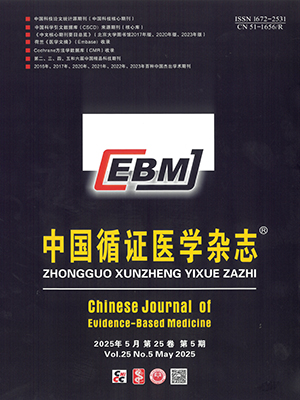| 1. |
Deng B, Cassivi SD, De AM, et al. Clinical outcomes and changes in lung function after segmentectomy versus lobectomy for lung cancer cases. J Thorac Cardiovasc Surg, 2014, 148(4): 1186-1192.
|
| 2. |
Liu HP, Chang CH, Lin PJ, et al. Thoracoscopic-assisted lobectomy: preliminary experience and results. Chest, 1995, 107(3): 853.
|
| 3. |
Landreneau RJ, Hazelrigg SR, Mack MJ, et al. Postoperative pain-related morbidity: video-assisted thoracic surgery versus thoracotomy. Ann Thorac Surg, 1994, 56(6): 1285-1289.
|
| 4. |
Landreneau RJ, Mack MJ, Hazelrigg SR, et al. Prevalence of chronic pain after pulmonary resection by thoracotomy or video-assisted thoracic surgery. J Thorac Cardiovasc Surg, 1994, 107(4): 1085-1086.
|
| 5. |
Shapiro M, Weiser TS, Wisnivesky JP, et al. Thoracoscopic segmentectomy compares favorably with thoracoscopic lobectomy for patients with small stage I lung cancer. J Thorac Cardiovasc Surg, 2009, 137(6): 1388-1393.
|
| 6. |
Yoshimoto K, Nomori H, Mori T, et al. Postoperative change in pulmonary function of the ipsilateral preserved lung after segmentectomy versus lobectomy. Eur J Cardiothorac, 2010, 37(1): 36-39.
|
| 7. |
Schuchert MJ, Normolle DP, Mccormick KN, et al. Anatomic segmentectomy versus lobectomy for clinical stage I non-small cell lung cancer: a propensity-matched analysis. J Clin Oncol, 2012, 32(23): 2449-2455.
|
| 8. |
Suzuki H, Morimoto J, Mizobuchi T, et al. Does segmentectomy really preserve the pulmonary function better than lobectomy for patients with early-stage lung cancer. Surg Today, 2016, 47(4): 463-469.
|
| 9. |
Nakata M, Saeki H, Yokoyama N, et al. Pulmonary function after lobectomy: video-assisted thoracic surgery versus thoracotomy. Ann Thorac Surg, 2000, 70(3): 938-941.
|
| 10. |
Keenan RJ, Landreneau RJ, Maley RH, et al. Segmental resection spares pulmonary function in patients with stage I lung cancer. Ann Thorac Surg, 2004, 78(1): 228-233.
|
| 11. |
Yatsuyanagi E, Sato K, Murakami K, et al. Comparison of postoperative lung function between segmentectomy and lobectomy in patients with lung carcinoma. Kyobu Geka, 2005, 58(6): 466-469.
|
| 12. |
Mondello B, Sibilio M, Pavone A, et al. "Intentionally" limited pulmonary resection versus lobectomy for the treatment of peripheral stage IA non-small cell lung cancers. G Chir, 2007, 28(1-2): 7-12.
|
| 13. |
Kashiwabara K, Sasaki J, Mori T, et al. Relationship between functional preservation after segmentectomy and volume-reduction effects after lobectomy in stage I non-small cell lung cancer patients with emphysema. J Thorac Oncol, 2009, 4(9): 1111-1116.
|
| 14. |
Yoshimoto K, Nomori H, Mori T, et al. Quantification of the impact of segmentectomy on pulmonary function by perfusion single-photon-emission computed tomography and multidetector computed tomography. J Thorac Cardiovasc Surg, 2009, 137(5): 1200-1205.
|
| 15. |
Yoshimoto K, Nomori H, Mori T, et al. A segmentectomy of the right upper lobe has an advantage over a right upper lobectomy regarding the preservation of the functional volume of the right middle lobe: analysis by perfusion single-photon emission computed tomography/computed tomography. Surg Today, 2010, 40(7): 614-619.
|
| 16. |
车国卫, 喻鹏铭, 苏建华, 等. 胸腔镜和开放肺叶切除术对肺癌患者心肺运动耐力的影响. 四川大学学报(医学版), 2013, 44(1): 122-125.
|
| 17. |
Saito H, Nakagawa T, Ito M, et al. Pulmonary function after lobectomy versus segmentectomy in patients with stage I non-small cell lung cancer. World J Surg, 2014, 38(8): 2025-2031.
|
| 18. |
张卫强, 左建新, 谭健, 等. 电视胸腔镜手术对老年非小细胞肺癌患者术后心肺并发症的影响分析. 中国全科医学, 2014, 17(2): 220-222.
|
| 19. |
Hwang Y, Kang CH, Kim HS, et al. Comparison of thoracoscopic segmentectomy and thoracoscopic lobectomy on the patients with non-small cell lung cancer: a propensity score matching study. Eur J Cardiothorac Surg, 2015, 48(2): 273-278.
|
| 20. |
Xue Y, Wang YY, Zhang K, et al. A study of complete video-assisted thoracoscopic surgery lobectomy in treatment of elderly patients with non-small cell lung cancer: curative effect and impact on clinical prognosis. Cell Biochem Biophys, 2015, 73(2): 399-404.
|
| 21. |
张克, 赵得堡. 全胸腔镜肺叶切除术治疗老年非小细胞肺癌的近远期疗效分析. 重庆医学, 2015, 44(34): 4829-4832.
|
| 22. |
李国强, 骆杨. 常规开胸和电视胸腔镜肺叶切除术对肺癌患者术后心、肺运动耐力的影响分析. 中国实用医药, 2016, 11(10): 64-65.
|
| 23. |
赵纯, 曹隆想, 张翀, 等. 胸腔镜下肺段切除术与肺叶切除术治疗肺癌的近期疗效评估. 华中科技大学学报医学版, 2015, 44(2): 213-216.
|
| 24. |
张志锋, 洪祎纯, 黄豪达, 等. 腔镜微创手术对肺癌患者术后肺功能的影响分析. 齐齐哈尔医学院学报, 2015(12): 1739-1740.
|
| 25. |
张艳娇, 高禹舜. 肺癌胸腔镜肺叶切除、胸腔镜肺段切除与开胸肺叶切除术后对肺功能影响的研究. 中国肺癌杂志, 2016, 19(10): 700-704.
|
| 26. |
于军, 高媛. 肺段与肺叶切除治疗早期 NSCLC 效果及肺功能比较. 西南国防医药, 2016, 26(8): 890-892.
|
| 27. |
赵晓龙, 孟胜蓝, 蔡云婷, 等. 胸腔镜下肺叶切除术和肺段切除术治疗肺癌患者临床疗效及其对肺功能影响的比较. 疑难病杂志, 2016, 15(7): 690-693.
|
| 28. |
范明, 王永利, 钱佳音. 不同肺叶切除术对 Ⅰ~Ⅱ 期非小细胞肺癌患者术后肺功能和生活质量的影响比较. 实用癌症杂志, 2016, 31(8): 1302-1304.
|
| 29. |
杨欣, 曾兴建, 付娟. 电视胸腔镜与传统手术对治疗非小细胞肺癌患者心肺功能影响分析. 临床和实验医学杂志, 2016, 15(11): 1087-1089.
|
| 30. |
魏合成, 张海霞. 全胸腔镜肺叶切除治疗肺癌的临床效果及对患者免疫功能、炎性因子和生存质量的影响. 河北医药, 2016, 38(11): 1688-1690.
|
| 31. |
龙志华, 黄健文. 完全胸腔镜下肺叶与肺段切除术治疗 Ⅰ 期肺癌的临床对比研究. 白求恩医学杂志, 2016, 14(3): 301-302.
|
| 32. |
Echavarria MF, Cheng AM, Velez-Cubian FO, et al. Comparison of pulmonary function tests and perioperative outcomes after robotic-assisted pulmonary lobectomy vs. segmentectomy. SAfr J Surg, 2016, 212(6): 1175-1182.
|
| 33. |
Park TY, Park YS. Long-term respiratory function recovery in patients with stage I lung cancer receiving video-assisted thoracic surgery versus thoracotomy. J Thorac Dis, 2016, 8(1): 161-168.
|
| 34. |
林文苑, 唐杰, 曾波航. 手术治疗局限期小细胞肺癌疗效的 Meta 分析. 中山大学学报(医学科学版), 2015, 36(6): 943-948.
|
| 35. |
Juhl B, Frost N. A comparison between measured and calculated changes in the lung function after operation for pulmonary cancer. Acta Anaesth Scand, 1975, 19(57): 39-45.
|
| 36. |
Nishio W, Yoshimura M, Maniwa Y, et al. Re-assessment of intentional extended segmentectomy for clinical T1aN0 non-small cell lung cancer. Ann Thorac Surg, 2016, 102(5): 1702-1710.
|
| 37. |
张国红, 操敏. 肺癌患者弥散功能特点及临床意义探讨. 中国肺癌杂志, 2002, 5(3): 207-210.
|
| 38. |
操敏, 李琦, 张国红, 等. 肺癌患者运动心肺功能的特点及影响因素的观察. 中国肺癌杂志, 2002, 5(6): 123-128.
|




